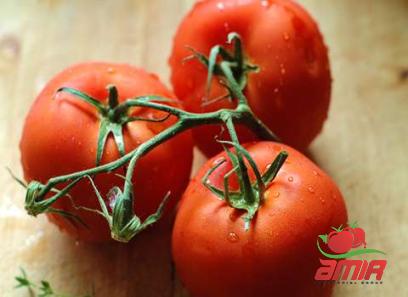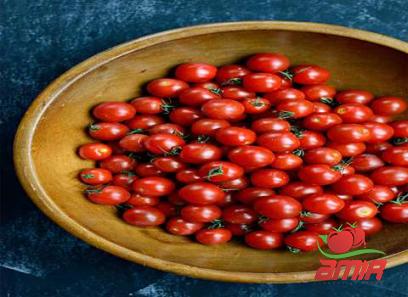In the wide and diverse world of culinary delights, tomato paste stands out as a humble yet indispensable ingredient that can transform ordinary dishes into extraordinary culinary creations. Whether you are a seasoned chef or a novice in the kitchen, tomato paste is a pantry staple that offers convenience, versatility, and a burst of rich umami flavor to a variety of dishes. In this comprehensive guide, we will explore everything you need to know about easy eating tomato paste – from its origins and nutritional benefits to creative ways to incorporate it into your daily cooking routine. ## Origins and Production Process of Tomato Paste Tomato paste is a concentrated form of tomatoes that have been cooked down and strained to remove the seeds and skin, resulting in a thick and rich puree. The process of making tomato paste begins with ripe tomatoes that are harvested at the peak of freshness. These tomatoes are then washed, chopped, and cooked down to break down their fibers and release their natural juices. The mixture is then strained to remove any solids, resulting in a smooth and concentrated paste.

.
 The origins of tomato paste can be traced back to the Mediterranean region, where tomatoes are a staple ingredient in many traditional dishes. Over the years, tomato paste has become a pantry staple in kitchens around the world, prized for its convenience, versatility, and intense tomato flavor. Today, tomato paste is widely available in supermarkets in various forms, including canned, jarred, and in convenient tube packaging. ## Nutritional Benefits of Tomato Paste In addition to its rich and tangy flavor, tomato paste is also a nutritional powerhouse packed with essential vitamins, minerals, and antioxidants. Tomatoes are a rich source of lycopene, a powerful antioxidant that has been linked to numerous health benefits, including reduced risk of chronic diseases such as heart disease and cancer. One of the key advantages of tomato paste is its concentrated form, which means that it contains a higher concentration of nutrients compared to fresh tomatoes. Just a small amount of tomato paste can provide a significant dose of vitamins A and C, as well as minerals such as potassium and manganese. Moreover, tomato paste is low in calories and fat, making it a healthy addition to a wide range of dishes. Whether you are looking to boost your immune system, support heart health, or improve skin health, tomato paste offers a delicious and nutritious way to incorporate more antioxidants and vitamins into your diet. ## Creative Ways to Incorporate Tomato Paste into Your Cooking Tomato paste is a versatile ingredient that can be used in a wide range of dishes, from soups and stews to pasta sauces and marinades. Its intense flavor and thick consistency make it a perfect base for building complex and delicious flavors in your cooking. Here are some creative ways to incorporate tomato paste into your culinary creations: 1. **Pasta Sauces**: Tomato paste is the secret ingredient that adds depth and richness to homemade pasta sauces. Whether you are making a classic marinara sauce or a creamy vodka sauce, a spoonful of tomato paste can elevate the flavor profile of your dish.
The origins of tomato paste can be traced back to the Mediterranean region, where tomatoes are a staple ingredient in many traditional dishes. Over the years, tomato paste has become a pantry staple in kitchens around the world, prized for its convenience, versatility, and intense tomato flavor. Today, tomato paste is widely available in supermarkets in various forms, including canned, jarred, and in convenient tube packaging. ## Nutritional Benefits of Tomato Paste In addition to its rich and tangy flavor, tomato paste is also a nutritional powerhouse packed with essential vitamins, minerals, and antioxidants. Tomatoes are a rich source of lycopene, a powerful antioxidant that has been linked to numerous health benefits, including reduced risk of chronic diseases such as heart disease and cancer. One of the key advantages of tomato paste is its concentrated form, which means that it contains a higher concentration of nutrients compared to fresh tomatoes. Just a small amount of tomato paste can provide a significant dose of vitamins A and C, as well as minerals such as potassium and manganese. Moreover, tomato paste is low in calories and fat, making it a healthy addition to a wide range of dishes. Whether you are looking to boost your immune system, support heart health, or improve skin health, tomato paste offers a delicious and nutritious way to incorporate more antioxidants and vitamins into your diet. ## Creative Ways to Incorporate Tomato Paste into Your Cooking Tomato paste is a versatile ingredient that can be used in a wide range of dishes, from soups and stews to pasta sauces and marinades. Its intense flavor and thick consistency make it a perfect base for building complex and delicious flavors in your cooking. Here are some creative ways to incorporate tomato paste into your culinary creations: 1. **Pasta Sauces**: Tomato paste is the secret ingredient that adds depth and richness to homemade pasta sauces. Whether you are making a classic marinara sauce or a creamy vodka sauce, a spoonful of tomato paste can elevate the flavor profile of your dish.
..
 2. **Soups and Stews**: Tomato paste is a common ingredient in soups and stews, adding a touch of sweetness and acidity to balance out other flavors. Try adding a dollop of tomato paste to your next batch of chili or vegetable soup for a burst of umami goodness. 3. **Marinades and Rubs**: Tomato paste can also be used as a base for marinades and rubs for meats and vegetables. Mix tomato paste with olive oil, garlic, and herbs to create a flavorful marinade for grilled chicken or vegetables. 4. **Braising and Roasting**: Tomato paste is a great ingredient for braising and roasting meats, adding a rich and savory flavor to the dish. Coat chicken or pork with a mixture of tomato paste, balsamic vinegar, and herbs before roasting for a delicious and flavorful meal. 5. **Pizza and Flatbreads**: Tomato paste is a classic topping for pizza and flatbreads, providing a rich and tangy base for other toppings. Spread a thin layer of tomato paste on your pizza dough before adding cheese, vegetables, and meats for a delicious homemade pizza. ## Tips for Storing and Using Tomato Paste To make the most of your tomato paste and prevent waste, here are some tips for storing and using this versatile ingredient: 1. **Storage**: Once opened, tomato paste should be stored in an airtight container in the refrigerator. To prevent it from drying out, you can drizzle a thin layer of olive oil on the surface of the paste before sealing the container. 2. **Freezing**: If you have leftover tomato paste that you won’t use right away, consider freezing it for future use. Portion the tomato paste into ice cube trays and freeze until solid. Transfer the frozen cubes to a resealable plastic bag for easy storage. 3. **Substitutions**: If you run out of tomato paste while cooking, you can substitute it with tomato sauce or puree, although the flavor and consistency may be slightly different. To maintain the depth of flavor that tomato paste provides, consider adding a dash of tomato powder or sun-dried tomatoes to your dish. 4. **Enhancements**: To enhance the flavor of tomato paste in your dishes, consider adding a pinch of sugar to balance out the acidity, or a sprinkle of dried herbs such as oregano or basil for added depth of flavor. Experiment with different spices and seasonings to create unique and flavorful dishes. 5. **Versatility**: Don’t be afraid to think outside the box when using tomato paste in your cooking. Mix it into meatloaf or meatballs for added moisture and flavor, or stir it into risottos and casseroles for a delicious twist.
2. **Soups and Stews**: Tomato paste is a common ingredient in soups and stews, adding a touch of sweetness and acidity to balance out other flavors. Try adding a dollop of tomato paste to your next batch of chili or vegetable soup for a burst of umami goodness. 3. **Marinades and Rubs**: Tomato paste can also be used as a base for marinades and rubs for meats and vegetables. Mix tomato paste with olive oil, garlic, and herbs to create a flavorful marinade for grilled chicken or vegetables. 4. **Braising and Roasting**: Tomato paste is a great ingredient for braising and roasting meats, adding a rich and savory flavor to the dish. Coat chicken or pork with a mixture of tomato paste, balsamic vinegar, and herbs before roasting for a delicious and flavorful meal. 5. **Pizza and Flatbreads**: Tomato paste is a classic topping for pizza and flatbreads, providing a rich and tangy base for other toppings. Spread a thin layer of tomato paste on your pizza dough before adding cheese, vegetables, and meats for a delicious homemade pizza. ## Tips for Storing and Using Tomato Paste To make the most of your tomato paste and prevent waste, here are some tips for storing and using this versatile ingredient: 1. **Storage**: Once opened, tomato paste should be stored in an airtight container in the refrigerator. To prevent it from drying out, you can drizzle a thin layer of olive oil on the surface of the paste before sealing the container. 2. **Freezing**: If you have leftover tomato paste that you won’t use right away, consider freezing it for future use. Portion the tomato paste into ice cube trays and freeze until solid. Transfer the frozen cubes to a resealable plastic bag for easy storage. 3. **Substitutions**: If you run out of tomato paste while cooking, you can substitute it with tomato sauce or puree, although the flavor and consistency may be slightly different. To maintain the depth of flavor that tomato paste provides, consider adding a dash of tomato powder or sun-dried tomatoes to your dish. 4. **Enhancements**: To enhance the flavor of tomato paste in your dishes, consider adding a pinch of sugar to balance out the acidity, or a sprinkle of dried herbs such as oregano or basil for added depth of flavor. Experiment with different spices and seasonings to create unique and flavorful dishes. 5. **Versatility**: Don’t be afraid to think outside the box when using tomato paste in your cooking. Mix it into meatloaf or meatballs for added moisture and flavor, or stir it into risottos and casseroles for a delicious twist.
…
 In conclusion, tomato paste is a versatile and flavorful ingredient that deserves a permanent place in every kitchen pantry. Whether you are looking to add depth of flavor to your pasta dishes, enhance the richness of your soups and stews, or create mouthwatering marinades and sauces, tomato paste is a versatile and convenient option that can elevate your cooking to new heights. With its nutritional benefits, ease of use, and wide range of culinary applications, tomato paste is a must-have ingredient for easy eating and delicious dining experiences. 6. **Homemade Tomato Paste**: For those who enjoy a hands-on approach to cooking, making your own tomato paste can be a rewarding and economical project. To make homemade tomato paste, start by simmering peeled and chopped tomatoes with a pinch of salt until they break down and thicken. The mixture is then pureed and strained to remove any solids before being cooked down further to achieve a thick and concentrated paste. You can customize the flavor of your homemade tomato paste by adding herbs, spices, or a splash of balsamic vinegar for a unique and personalized touch. 7. **Tomato Paste in Baking**: While tomato paste is commonly used in savory dishes, it can also be incorporated into baked goods to add complexity and depth of flavor. Consider adding a tablespoon of tomato paste to your bread dough or pizza crust for an unexpected twist on classic recipes. The natural sugars in tomatoes can also help enhance the Maillard reaction, resulting in a beautifully browned and flavorful crust. 8. **Health Benefits**: In addition to its culinary uses, tomato paste offers a range of health benefits that make it a valuable addition to a balanced diet. Tomatoes are rich in vitamins A, C, and K, as well as potassium and folate, which are essential nutrients for overall health and well-being. The lycopene in tomatoes has been linked to reduced risk of certain types of cancer, protection against sun damage, and improved heart health. By incorporating tomato paste into your cooking, you can reap the nutritional rewards of this powerhouse ingredient. 9. **Environmental Impact**: Choosing tomato paste over fresh tomatoes can also have positive environmental implications. Canned tomato paste has a longer shelf life than fresh tomatoes, reducing food waste and greenhouse gas emissions associated with transportation and storage. By opting for tomato paste, you can support sustainable food practices and reduce your carbon footprint while enjoying the convenience and versatility of this kitchen staple. 10. **Global Cuisine**: Tomato paste is a common ingredient in a wide range of global cuisines, from Italian pasta dishes to Middle Eastern stews and curries. Each culture has its own unique twist on tomato-based dishes, showcasing the versatility and adaptability of tomato paste in diverse culinary traditions. Whether you are making a Moroccan tagine, an Indian curry, or a Spanish paella, tomato paste can serve as a unifying element that adds depth and richness to the dish.
In conclusion, tomato paste is a versatile and flavorful ingredient that deserves a permanent place in every kitchen pantry. Whether you are looking to add depth of flavor to your pasta dishes, enhance the richness of your soups and stews, or create mouthwatering marinades and sauces, tomato paste is a versatile and convenient option that can elevate your cooking to new heights. With its nutritional benefits, ease of use, and wide range of culinary applications, tomato paste is a must-have ingredient for easy eating and delicious dining experiences. 6. **Homemade Tomato Paste**: For those who enjoy a hands-on approach to cooking, making your own tomato paste can be a rewarding and economical project. To make homemade tomato paste, start by simmering peeled and chopped tomatoes with a pinch of salt until they break down and thicken. The mixture is then pureed and strained to remove any solids before being cooked down further to achieve a thick and concentrated paste. You can customize the flavor of your homemade tomato paste by adding herbs, spices, or a splash of balsamic vinegar for a unique and personalized touch. 7. **Tomato Paste in Baking**: While tomato paste is commonly used in savory dishes, it can also be incorporated into baked goods to add complexity and depth of flavor. Consider adding a tablespoon of tomato paste to your bread dough or pizza crust for an unexpected twist on classic recipes. The natural sugars in tomatoes can also help enhance the Maillard reaction, resulting in a beautifully browned and flavorful crust. 8. **Health Benefits**: In addition to its culinary uses, tomato paste offers a range of health benefits that make it a valuable addition to a balanced diet. Tomatoes are rich in vitamins A, C, and K, as well as potassium and folate, which are essential nutrients for overall health and well-being. The lycopene in tomatoes has been linked to reduced risk of certain types of cancer, protection against sun damage, and improved heart health. By incorporating tomato paste into your cooking, you can reap the nutritional rewards of this powerhouse ingredient. 9. **Environmental Impact**: Choosing tomato paste over fresh tomatoes can also have positive environmental implications. Canned tomato paste has a longer shelf life than fresh tomatoes, reducing food waste and greenhouse gas emissions associated with transportation and storage. By opting for tomato paste, you can support sustainable food practices and reduce your carbon footprint while enjoying the convenience and versatility of this kitchen staple. 10. **Global Cuisine**: Tomato paste is a common ingredient in a wide range of global cuisines, from Italian pasta dishes to Middle Eastern stews and curries. Each culture has its own unique twist on tomato-based dishes, showcasing the versatility and adaptability of tomato paste in diverse culinary traditions. Whether you are making a Moroccan tagine, an Indian curry, or a Spanish paella, tomato paste can serve as a unifying element that adds depth and richness to the dish.










Your comment submitted.